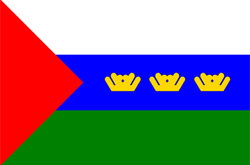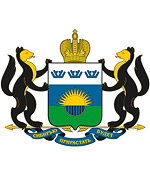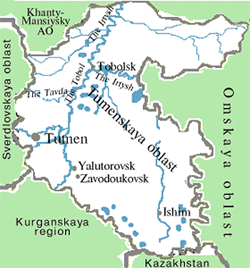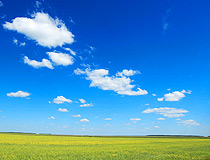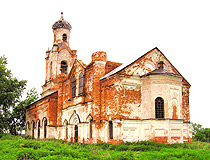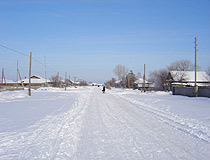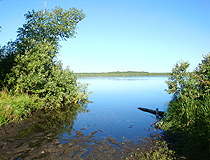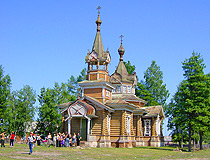History of Tyumen Oblast
People began to explore Western Siberia about 15-20 thousand years ago. Western Siberia was inhabited by the tribes of the Khanty and Mansi (Voguls), Nenets (Samoyed), Selkups (Ostyaks-Samoyeds). At the end of the first millennium AD, the Turkic tribes inhabited the south of the present Tyumen region; later, they formed into an ethnic community of the Siberian Tatars.
In the 13th-16th centuries, Chingi-Tura (Chimgi-Tura), the capital of the Tyumen Khanate of the Tatars and Kereits, was standing on the bank of the Tyumenka River. The khanate was in vassal dependence on the Golden Horde. Around 1500, the ruler of the Tyumen Khanate united the greater part of Western Siberia by creating the Siberian Khanate with the capital in the town of Kashlyk, also known as Sibir and Isker.
The Siberian khans waged numerous wars against the Astrakhan Khanate, the Nogai Horde, raided on Russian territory. In 1563, Kuchum became the khan. He managed to unite the previously hostile Tatar tribes, subordinated the Vogul and Samoyed tribes to his influence.
In order to protect their territories from the Tatars, the Urals merchants and industrialists of Stroganov hired the Cossack detachment headed by Ermak to their service. In 1582, the Cossacks began a campaign against the Siberian Khanate. In the autumn of 1582, there was a decisive battle against the troops headed by Kuchum. In the battle at the Chuvash cape, the khan’s forces were defeated.
More Historical Facts…
The Cossacks’ military campaign in Siberia lasted four years. The main forces of the Siberian Tatars were defeated. Even after the death of Ermak in 1585, the khanate could not gain its former strength. The campaign of Ermak opened the way for the Russian migration to Siberia.
In 1586, the construction of a stockaded settlement began on the Tura River. Later, it became the first Russian town in Siberia - Tyumen. In 1587, the stockaded settlement of Tobolsk was founded, 17 km from the Tatar settlement of Sibir (Kashlyk, Isker) (the capital of the Siberian Khanate). In 1593-1594, the towns of Berezov and Surgut were founded. With the expansion of land routes to Eastern Siberia, more Russian towns were founded. In 1590, Tobolsk became the main center of Siberia.
In the 17th century, Tobolsk and Tyumen, as trade and craft centers, reached the level of the towns of the European part of Russia. Since the end of the 17th century, stone construction began - the first stone buildings beyond the Urals appeared in Tobolsk. The only Kremlin in the eastern part of Russia was built in Tobolsk. In 1708, Tobolsk became the administrative center of the largest province in Russia - Siberian province.
One of the factors that determined the life of Western Siberia was the political exile. In the second quarter of the 19th century, the Decembrists were exiled to Tobolsk gubernia (province). Other representatives of liberation movements of Russia - Radishev, Dostoyevsky, Petrashevsky and a lot of others - also experienced imprisonment in Tobolsk.
In the 18th-19th centuries, Tobolsk was the administrative, cultural and spiritual center of Siberia. Tyumen was a commercial and industrial center. Located at the intersection of trade routes between the West and the East, Tyumen turned into a “gateway to Siberia.” Through Tyumen, the path of settlers from the European part of the Russian Empire passed after the abolition of serfdom and during the Stolypin agrarian reform.
The development of the region intensified during the construction of the Trans-Siberian Railway. Several natives of the region became world famous: D.I. Mendeleev (Tobolsk) - one of the greatest chemists and the author of the periodic system, P.P. Ershov (Tobolsk) - a poet, storyteller, author of “The Horse - Hunchback”, G.E. Rasputin (Pokrovskoye village) - the favorite of the last Russian emperor.
In 1917-1918, the family of Nikolai Romanov, the last Russian emperor, was under the arrest in Tobolsk. The town was one of the centers of the largest popular uprising against the Bolsheviks - a peasant uprising in Siberia in 1921-1922. During the Soviet era, the region continued to be a place of exile, part of the Gulag - a system of forced-labor camps.
In the 1920s-1940s, the territory remained mainly agricultural. During the Second World War, a number of industrial enterprises, scientific institutions, ministries, and departments were evacuated to this region. Since the summer of 1941, the body of V.I. Lenin was kept in Tyumen. August 14, 1944, Tyumen oblast with a center in Tyumen was formed, the region also included the Khanty-Mansi and Yamal-Nenets districts.
In 1964, a new page in the history of the Tyumen region began. The discovery of significant oil and natural gas deposits became the basis for the creation of one of the world’s largest oil and gas complexes. The development of oil and gas fields radically changed life in the Tyumen region. Several new towns founded: Novy Urengoy, Nadym, Noyabrsk, and others.
In record time, the Tyumen region became the country’s main oil and gas power base. By the end of the 1980s, the region annually produced about 400 million tons of oil and 574.2 billion cubic meters of natural gas. The development of the natural resources of Tyumen oblast became a matter of the whole country. The population increased tenfold.
Nature of Tyumen Oblast
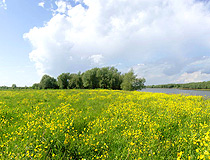
Scenic landscape in the Tyumen region
Author: Berdnikov Anton
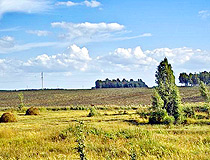
Tyumen Oblast scenery
Author: Sergey Bulanov
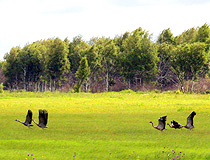
Wildlife of the Tyumen region
Author: N.Milov
Tyumen Oblast - Features
Tyumen Oblast is the only region of Russia that extends (together with autonomous okrugs) from the Arctic Ocean in the north to the state border in the south making it the third largest province of Russia after Yakutia and Krasnoyarsk krai.
The Khanty-Mansi Autonomous Okrug - Yugra is the main oil and gas bearing region of Russia and one of the largest oil producing regions in the world.
The Tyumen region is located in the southwestern part of the West Siberian lowland plain and divides Russia into two large parts: to the west - the Urals and the European part of the country, to the east - the Asian part: Siberia and the Far East.
The climate is arctic and subarctic in the north, temperate - in the center and in the south. The average temperature in January ranges from minus 17 degrees Celsius in Tyumen to minus 27 degrees Celsius in the north.
The largest rivers of the region, the Ob and the Irtysh, are navigable. In total, there are about 70 thousand lakes. Most of the territory is covered with forests.
The bulk of the country’s proven oil and gas reserves are concentrated in the autonomous okrugs of Tyumen Oblast. Peat, quartz sands and limestone are also extracted. Natural ore deposits and precious stones are found on the eastern slope of the Urals, near the Arctic Circle.
Tyumen Oblast - Economy
In terms of industrial output, the Tyumen region ranks first in Russia. The main branch of specialization is the fuel industry, which accounts for more than 80% of the region’s industrial output. The Tobolsk petrochemical plant is the largest in Russia. Timber cutting and wood processing industries are also developed.
The region is characterized by harsh natural and climatic conditions, 90% of the territory is classified as or equivalent to the regions of the Far North. Only 3% of the region’s territory is occupied by agricultural land.
More favorable climatic conditions of the south allow to grow grain, potatoes, vegetables, coarse and juicy forages, the presence of large areas of hayfields and pastures creates favorable conditions for dairy and meat cattle breeding. About 80% of the region’s agricultural output is produced here.
Reindeer herding and fishing are the traditional occupation of the indigenous peoples of the North.
Tourism in Tyumen Oblast
The main types of tourism popular in the Tyumen region: ecological, cultural (excursions), therapeutic and health, hunting and fishing, active recreation.
Tyumen and Tobolsk, the oldest cities founded during the beginning of the development of Siberia, have a number of architectural monuments of the times of the Russian Empire. The city’s day in Tyumen is celebrated on the last Sunday of July. As a rule, several thematic carnivals are held during this time. The city’s day in Tobolsk is celebrated on the last Sunday of June.
In addition to its rich historical and cultural heritage, the Tyumen region has great opportunities for active recreation and for those who wish to receive spa and wellness services. This region is rich in mineral waters, various in medicinal properties and quality, and thermal springs. In the lakes of the region, significant resources of various types of therapeutic mud are concentrated.
The main sights located outside Tyumen and Tobolsk:
Abalak - a village and a popular tourist complex located about 20 km from Tobolsk with a wooden fortress built in the style of the times of the conquest of Siberia. Reconstructions of historical events and holidays are being held here. Another attraction of this place is the Abalak Znamensky Monastery.
Yalutorovsk - an old town with a unique wooden fort, where you can feel the atmosphere of the 17th-18th centuries (watchtowers, craft workshops, recreational zones).
Pokrovskoye - a village in Yarkovsky district, 100 km east of Tyumen, on the road to Tobolsk. It is the birthplace of Grigory Rasputin. There is a museum of Rasputin in the village.
Turnaevo - a center of ecological tourism attracting lovers of wildlife: hiking, horse riding, hunting, fishing, dog sledding (in winter), etc. You can also visit a moose farm.
Andreevskoe Lake - the largest reservoir in the vicinity of Tyumen. It is a system of large and small lakes connected by straits. The area of the water surface is about 30 square kilometers. On the shore of the lake there is an archaeological museum-reserve.
Maryinsky Gorge - a natural monument located in the southern part of the region known for its magnificent landscapes, rich fauna and picturesque bends of the Iset River.


